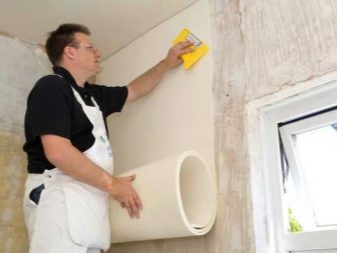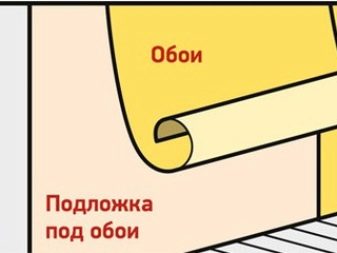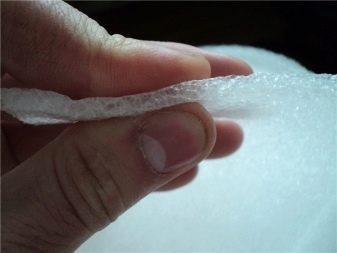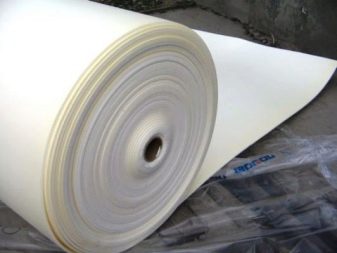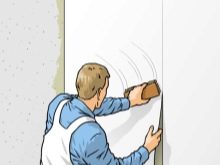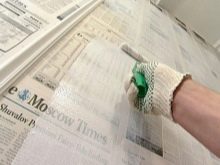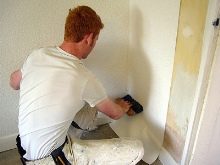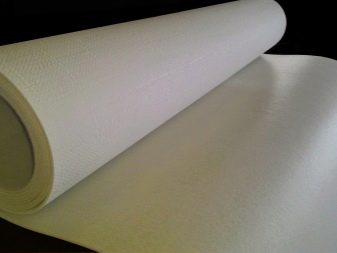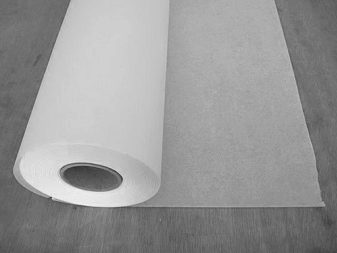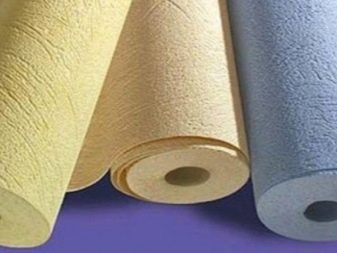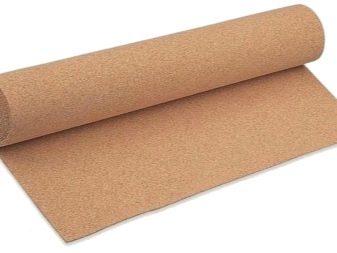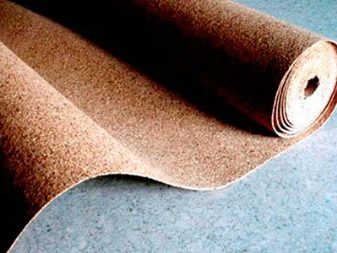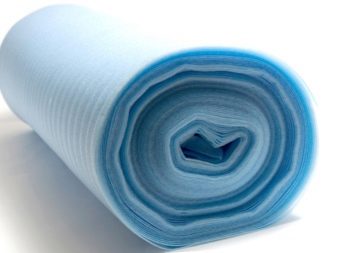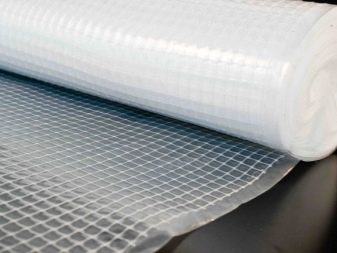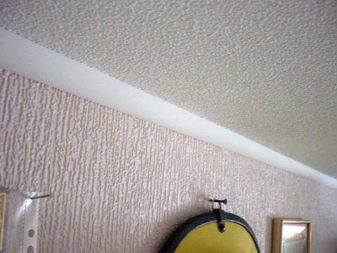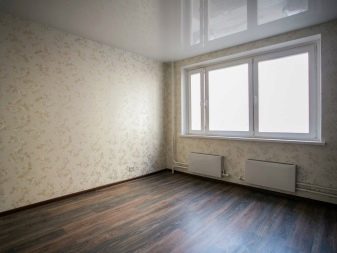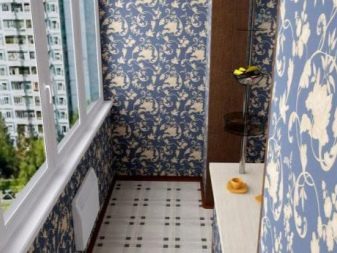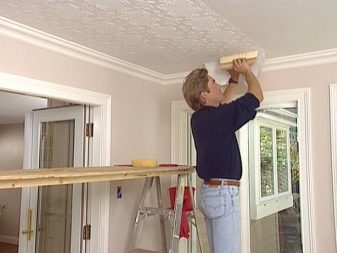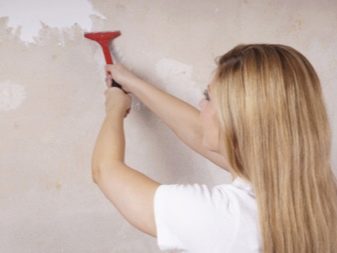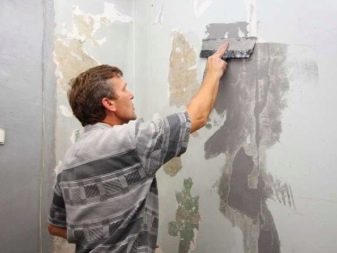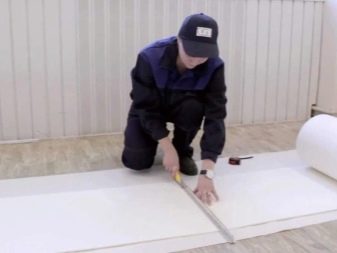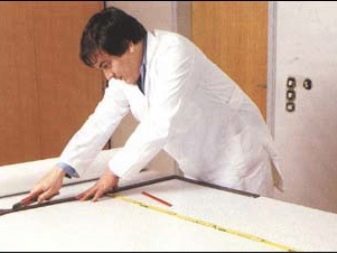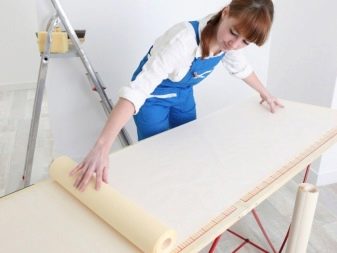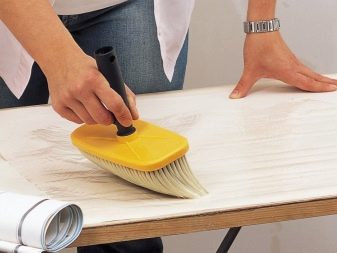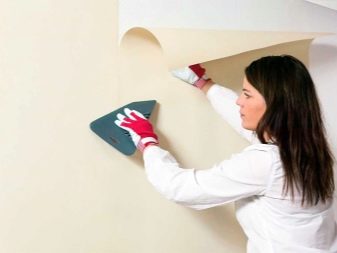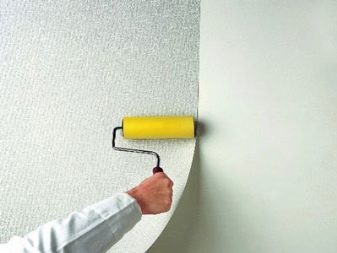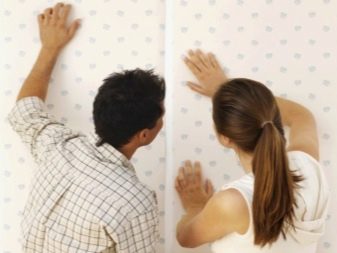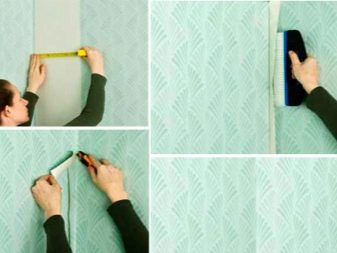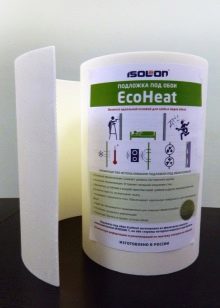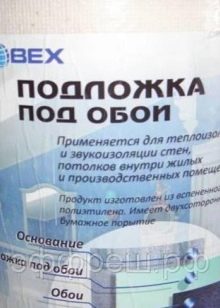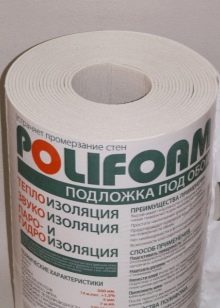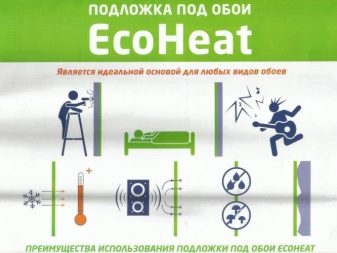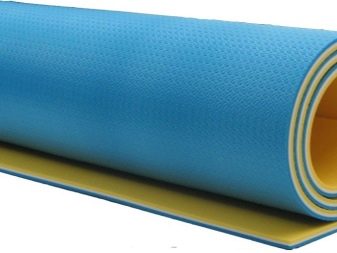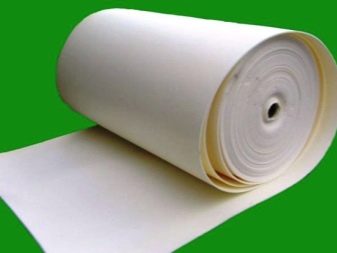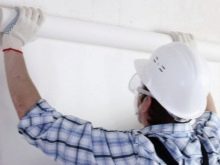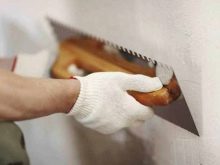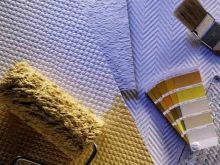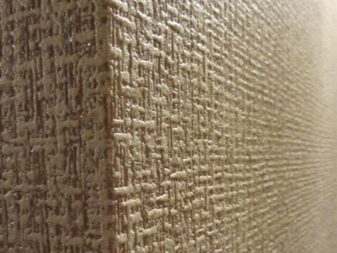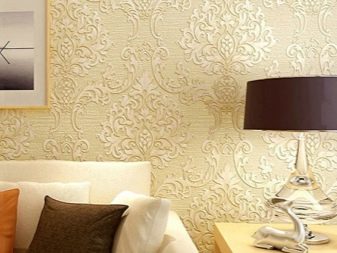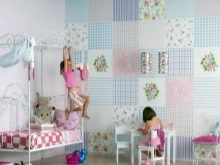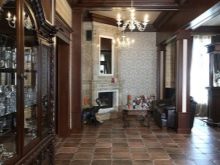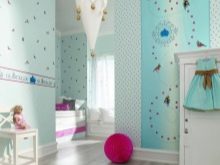Substrates for wallpaper: types and features of installation
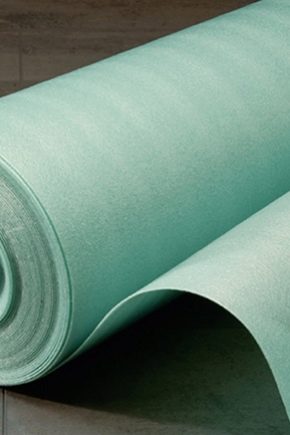
The walls in the house should be not only beautifully finished, but also to perform its function - reliable noise and heat insulation. So it is not enough to choose beautiful wallpapers and think over the design of the room. First you need to prepare the walls themselves. And this is done using the substrate under the wallpaper. The use of such material will significantly improve living conditions in the apartment or in the house.
Functions
The substrate consists of several layers. In the middle, as a rule, there is foamed polyethylene enclosed between layers of paper.
The substrate under the wallpaper is a reliable insulation, which can be an important advantage in houses or apartments with cold walls.
Many apartment "anthills", and the old and new construction, do not have good sound insulation. Residents hear other people's conversations, and not only on raised voices, music and harsh sounds from their neighbors. All this is unnerving and does not allow to live in peace. Noise isolation is provided by using the substrate under the wallpaper. Also this material allows to overcome the problem of humidity indoors.
It is an excellent lining for any wallpaper. Using it, the outer decorative layer is easier to glue and it will look better on the walls.
The use of the substrate allows you to achieve maximum fit of the finishing layer, even in such problem areas as corners and seams.
As a result, the finishing will last longer and the problem of new repairs, as well as the material costs associated with this, will move away. Once, old newspapers were used as a substrate. It was easier to glue wallpapers on them. Since then, technology has gone very far. Taking into account all the possibilities of modern substrates, their use cannot be considered a whim.
Types and composition
The buyer can choose from several varieties of this web material:
Paper
The base of the substrate consists of paper.Its use is especially useful in cases where it is problematic to get rid of traces of the old finish. It is glued to the surface of the wall better than wallpaper. Its disadvantage is that it does not hide the obvious flaws of the wall. Moreover, such a substrate is not particularly strong.
Flizelinovaya
Externally similar to non-woven wallpaper, the same durable and easily glued. At the same time, it is an expensive substrate. Not everyone will decide to buy it.
Corkboard
Created on the basis of technical cork, rather than decorative, so it is cheaper than the finishing material from cork. Its great advantage is in excellent sound absorption, which is indispensable if the house has thin walls and everything is audible. But you need to mount it with skill and using a special glue.
Polyethylene
This is a sandwich in which polyethylene foam is placed between two layers of paper. This material perfectly masks the defects of the wall surface, and thanks to the inner layer acts as a sound and heat insulator. It turns out a sort of improved version of the foam, which is traditionally used to ensure silence in the room.
Benefits of using
In addition to sound and heat insulation functions, this material has many beneficial characteristics. The advantages of its use lie in the fact that it is environmentally friendly and therefore applicable in any home. The surface of most substrates does not absorb liquid. Accordingly, the condensate on it is not formed, and it can protect the house from fungus for decades.
This coating partly aligns the base on which it is located. Small cracks and chips on the surface can be successfully hidden with this material.
Its properties do not change at least twenty years. Some of the manufacturers give him a guarantee of half a century. Therefore, once having spent money and time to buy and install such a substrate, you can make your life easier with the subsequent repairs, when again and again you have to change the wallpaper. The noise insulation feature of this material will be especially noticeable where the walls enclose the inner space from the street and common corridors. Good thermal insulation in these cases will also demonstrate itself successfully.
How to glue?
Practice shows that the substrate under the wallpaper is perfectly glued to the concrete, and to the tree, and to the plywood, and to the drywall.In order to firmly glue it to the surface, it is necessary to prepare the walls themselves for this: tear off the old wallpaper, remove paint residues, level the cavities and seal the cracks with a putty or cement mortar. Then you need to prime the surface. To do this, glue PVA or any other similar composition.
The stripes of the substrate must be prepared for the sticker on the walls in advance. They are cut very easily. They need to be divided into canvases, taking into account the height of the walls, and let these sheets even out.
So that they have time to finish, it is better to spend cutting the day before the pasting of the walls.
Smooth cloths of the material are coated on the inside with white glue or glue, which is used for heavy wallpaper or under polystyrene. With an increased level of humidity in the room using baguette glue or liquid nails. (This, of course, will be more expensive, but as a repair you can be sure).
Given all this, need to act so that the glue does not hit the joints. Otherwise, the pieces of the substrate will stick together and the seam between them will be uneven. Canvases with applied glue are left for five to ten minutes, and then they stick a joint to the wall on the walls - just like most modern wallpapers. In this case, the wall also needs to be smeared with the same glue.Note that if the outer layer of the substrate is non-woven, and not paper, then only the wall itself should be smeared with glue.
To maximize adhesion to the wall surface, a rubber roller is used, with which all the air is squeezed out from under the substrate and carefully rolled over the wall.
Gaps between the canvases need to be sealed with paper tape or paper tape. To the result did not disappoint, as well as in the case of the sticker wallpaper, should be avoided drafts. Experienced people themselves advise to work at temperatures above +10 degrees and humidity less than 70 percent. If the room is cold, the glue will not catch, and if, on the contrary, it is too hot, it will dry very quickly, and you may not have time to fix the substrate on the wall as a whole. Some sections will not be glued. Taking into account these features, it is recommended not to start such repairs in the spring or autumn, when high humidity and high temperature changes are observed.
After the deed is done, you need to wait two days and only after that proceed to decorating the walls with wallpaper.
Offers from manufacturers
To choose the right substrate for wallpaper, you need to keep in mind the experience of professionals involved in finishing. On the market are the substrate under the wallpaper of both foreign and domestic production. They can be found in the stores of building materials, and specialized stores selling wallpaper. Substrates of different brands may not match the thickness and composition of the material. So the cost of them sometimes varies greatly when comparing.
Ekohit, Penohome, Globex, Penolon, Polifom - These are the most famous manufacturers of wallpaper substrates. Among all the brands under which such materials are produced, specialists distinguish just “Penolon” and “Polifom” of domestic production. "Penolon" has good thermal insulation properties. This is achieved by air cells in its structure. The thickness of the material is only 5 millimeters. Roll width - 50 centimeters. Total roll 14 meters. At its core, Penolon is a chemically cross-linked polymer.
There are several varieties of such polymers - gas foam not crosslinked, physically and chemically crosslinked. The cheapest among all - not cross-linked polyethylene.In terms of strength and insulating capabilities, it is 25% worse than physically and chemically cross-linked polymers. The last two, despite the fact that their manufacturing technology is different, are very similar in their characteristics. "Penolon" is hygienic. It is light and elastic. Resistant to alkali, acid, as well as alcohol and gasoline. Easily cracks before sticking. It has low vapor permeability. Suitable for leveling the surface, suppresses noise, eliminates the cold coming from the walls, allows you to glue high-quality wallpaper, eliminates the effect of "weeping" walls.
“Polifom” (sometimes called “Polyform”) has the same geometrical parameters as “Penolon”. It is also 14 meters in length with a web width of 50 centimeters and a thickness of 5 millimeters. It is an eco-friendly material that does not absorb moisture, prevents the spread of fungus and mold. It is a reliable heat insulator.
When choosing a material Experts advise to pay attention to the color of the roll - it should be white or light gray. It also matters how firmly the paper layer is attached to the base. High-quality material is odorless and has a certain elasticity - after pressing with a finger, its surface must quickly return to its shape.
- Choosing a substrate for wallpaper, it is better to focus on the reviews of masters who have already gained experience in handling such materials, they know all their pros and cons and how to apply them correctly.
- You also need to keep in mind that before using such materials, if there is even the slightest hint of the presence of a fungus, the surface of the wall must be treated with special chemicals. You can not use the substrate in the baths and bathrooms.
- In rooms where the humidity is high enough, it is preferable not to use paper backing because the paper itself does not tolerate moisture. It is better in these cases to launch products from non-woven or cork.
- It is better to glue onto the substrate wallpaper of dense material, since thin can shine through, and the bottom layer will be noticeable. If, after all, you chose thin wallpapers, you need the underlay color to be white. Otherwise, the color of the wallpaper itself will be distorted, and the resulting effect will unpleasantly surprise you.
- If there are gaps between the sheets glued to the wall, you can disguise them with paper fitted to the size of the slots with glue. Substrate as such does not perform an absolute sound insulation function.This effect is achievable only with the use of special materials that require special mounting. Their thickness can reach 15 centimeters.
- High-quality substrate does not smell, does not emit dust or harmful substances. It is suitable for allergic rooms as well as children.
- The heat-shielding properties of such materials are tested in practice. Especially these qualities are noticeable on cold concrete walls. Experts are willing to apply the substrate for finishing cottages and in block houses. This helps to save on heating during the operation of housing and other objects.
How to glue the substrate under the wallpaper can be viewed in the next video.
